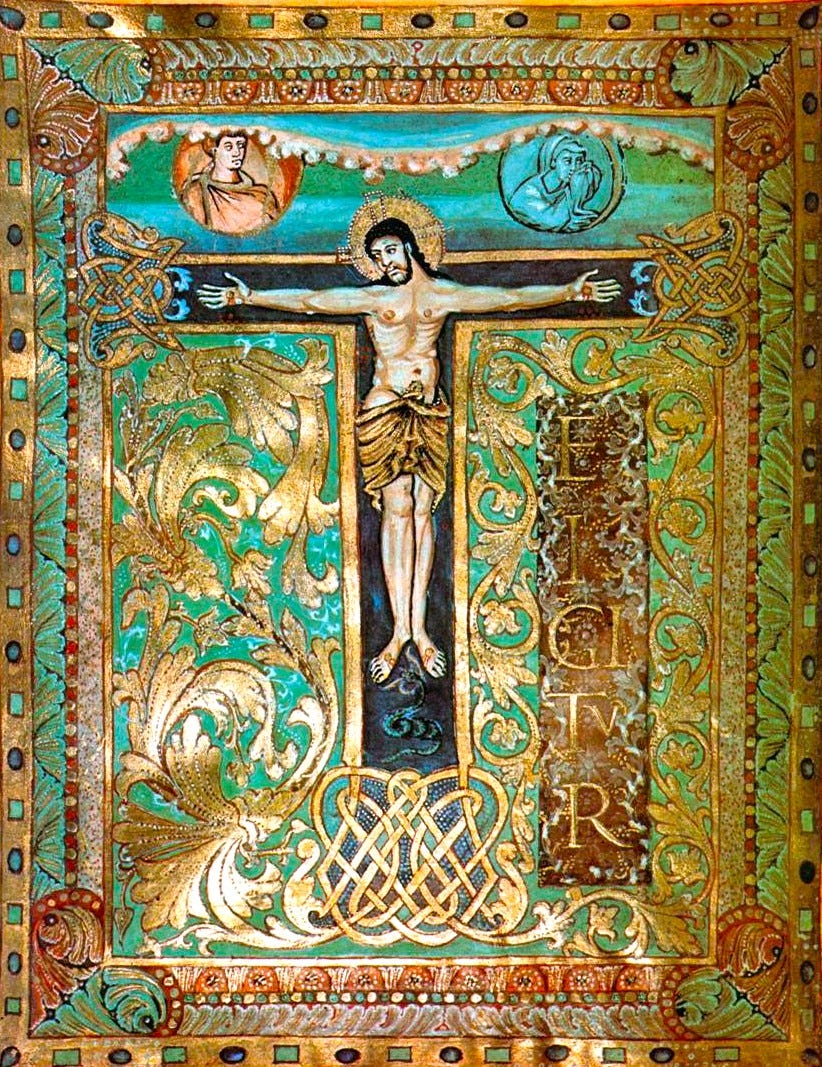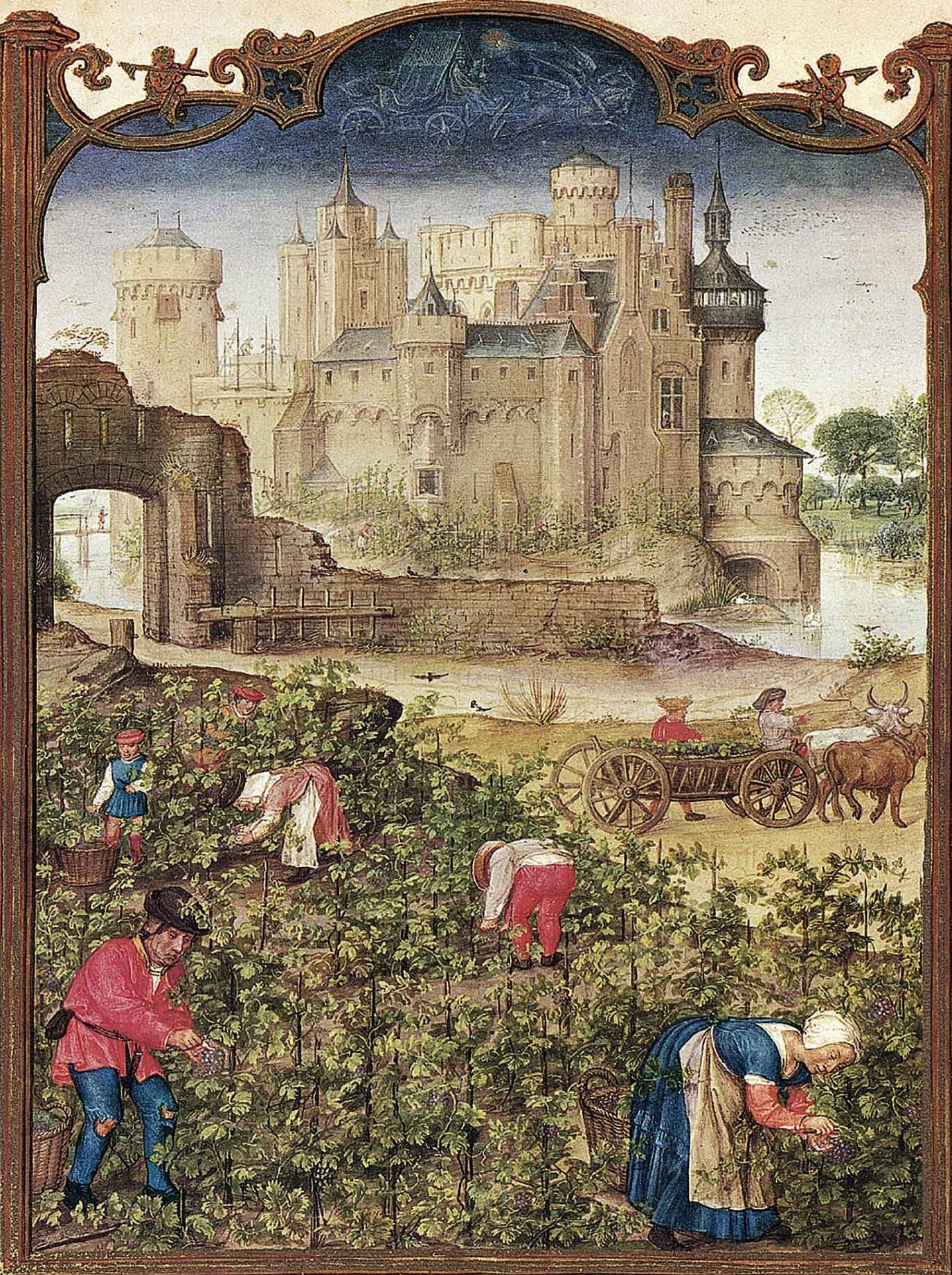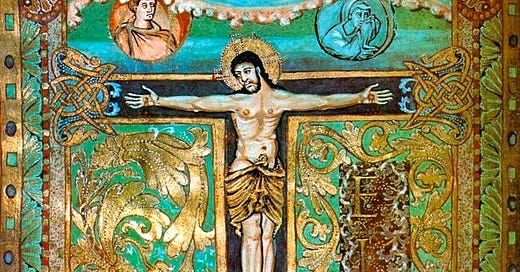
In today’s post for paid members, I thought we could start looking at the connection between the Carolingian Renaissance - the material manifestations of Charlemagne’s new western empire - and the ancient Christian teachings on mystical theology. How was Theosis, the Christian concept of the union of the soul with the divine, brought into the West? These crucial Christian teachings were carried over like a burning brand out of the upheavals of Iconoclasm and the Islamic invasions, by monasticism, spreading deeply into Western Christendom.
We’ll delve into how Charlemagne’s grants of vast lands and benefices to the monks played a crucial role in this process. Through these endowments, Europe was not only Christianized but also profoundly “monasticised”. The monasteries became the spiritual and cultural centres of the era, safeguarding and disseminating the mystical traditions that had been preserved through centuries of turmoil. Today, we'll begin looking at how the ideals of Theosis found fertile ground in the West and influenced the spiritual life of medieval Europe.
But first…
September: a new start and a welcome to new people!

Welcome to September - good old September - and especially to all new subscribers! I just looked for the first time in a while at the stats, and see that over 140 new people have suddenly signed up in the last two days, with nearly 30 just yesterday and even more today!
I must say this is a very encouraging surprise. I don’t know about you but I’ve been sort of waiting for September to get started again properly. One can’t help but have a slow down in the summer, especially in Italy and I feel as though I’ve been putting things off until the new school year starts.
To me September has always been the month when we wake up from our naps, shake off the stupor of August and start thinking about turning over leaves, both figurative and literal. As the air begins to cool (in my case in another month or so) and the days start to shorten, it feels like the perfect time to start a deeper dive into our explorations of traditional Christian sacred art and spirituality. Like starting a new school year. Remember how that felt, walking to school in the chill autumn air, stopping to crack the sheets of early morning ice on the puddles, brushing the soft bristles of frost with your fingers, the smell of oak leaves on the ground? Like everything was new again, and we all got another chance to start fresh and scrubbed clean and rosy cheeked, at whatever we were doing.

I hope you will all find this work spiritually and culturally uplifting. This site is a little different from a secular or academic art history page. We focus on the first 1200 years of art, from the 4th to the early 15th centuries, starting at the beginning of the Christian era and stopping at the start of the Florentine Renaissance1. Each week, we have three posts where we look together at the place where art, history, and mystical theology meet, taking all three as equally serious, equally real and important. And see if we can uncover some of the lost and forgotten stories and meanings behind the images.
The news in the world all seems bad, but it's really not the whole story. There is so much beauty and depth to be found, especially now that the internet has made it possible to look closely at “lost” works and ideas more easily than at any other era. It’s my hope that through our explorations, we’ll help each other find a sense of peace, historical and spiritual deep perspective, and maybe even an avenue toward “Joy” in the sense C. S. Lewis meant.
“Joy was not a deception. Its visitations were rather the moments of clearest consciousness we had, when we became aware of our fragmentary and phantasmal nature and ached for that impossible reunion which would annihilate us or that self-contradictory waking which would reveal, not that we had had, but that we were, a dream.”
The Sacred Images Project is a reader-supported publication where we talk about Christian life, thought, history and culture through the lens of the first 1200 years of sacred art. It’s my full time job, but it’s still not bringing a full time income, so I can’t yet provide all the things I want to and am planning for. You can subscribe for free to get one and a half posts a week.
For $9/month you also get the second half of the weekly Friday Goodie Bag post, plus a weekly paywalled in-depth article on this great sacred patrimony, plus our Benedictine Book Club in the Substack Chat. There are also occasional extras like downloadable exclusive high resolution printable images, ebooks, mini-courses, videos and eventually podcasts.
If you would prefer to set up a recurring donation in an amount of your choice, or make a one-off contribution, you can do that at my studio blog.
This helps me a lot because the patronages through the studio blog are not subject to the 10% Substack fee:
This is the site where I post photos of my own work as it develops. I have a shop there where some of my drawings and paintings are available for sale as prints, as well as some other items. Please enjoy a browse around:
Many thanks to all who have already become paid subscribers. I’m very grateful for your involvement in this work. I just received this note today from a new member, and it’s very encouraging; the message seems to be getting out:
And now, on with the show!






